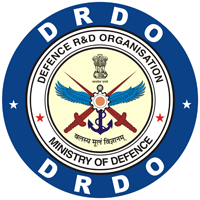Nanocurcumin Prevents Oxidative Stress Induced following Arsenic and Fluoride Co-exposure in Rats
DOI:
https://doi.org/10.14429/dlsj.1.10055Keywords:
Nanoencapsulation, curcumin, arsenic-fluoride co-exposure, oxidative stress, preventive effectsAbstract
The present study is in continuation of our previous efforts to investigate the preventive efficacy of encapsulated curcumin nanoparticles (nanocurcumin) in mitigating effects of arsenic and/or fluoride. Curcumin was encapsulated in chitosan nanoparticles having a size distribution in the range of 50 nm. Sodium arsenite (2 mg/kg, orally) and Fluoride (50 ppm in drinking water) either alone or in combination were administered to male Wistar rats for four weeks to evaluate the efficacy of nanocurcumin (15 mg/kg) in rats. The preventive efficacy of nanocurcumin was evaluated against various altered biochemical variables suggestive of oxidative stress in liver and kidneys, and concentration of As and F in blood. Nanocurcumin co-administration with arsenic and fluoride resulted in lowering of reactive oxygen species and restoration of blood glutathione level which were found to be altered in arsenic and fluoride intoxicated groups. Nanocurcumin were also found to be effective in reversing δ-aminolevulinic acid dehydratase (ALAD) inhibition caused by arsenic exposure. The most promising result from our study shows that nanocurcumin removes not only arsenic but also fluoride from blood which may be due to the enhanced bioavailability and moderate chelating potential of nanocurcumin.
Downloads
Published
How to Cite
Issue
Section
License
where otherwise noted, the Articles on this site are licensed under Creative Commons License: CC Attribution-Noncommercial-No Derivative Works 2.5 India

